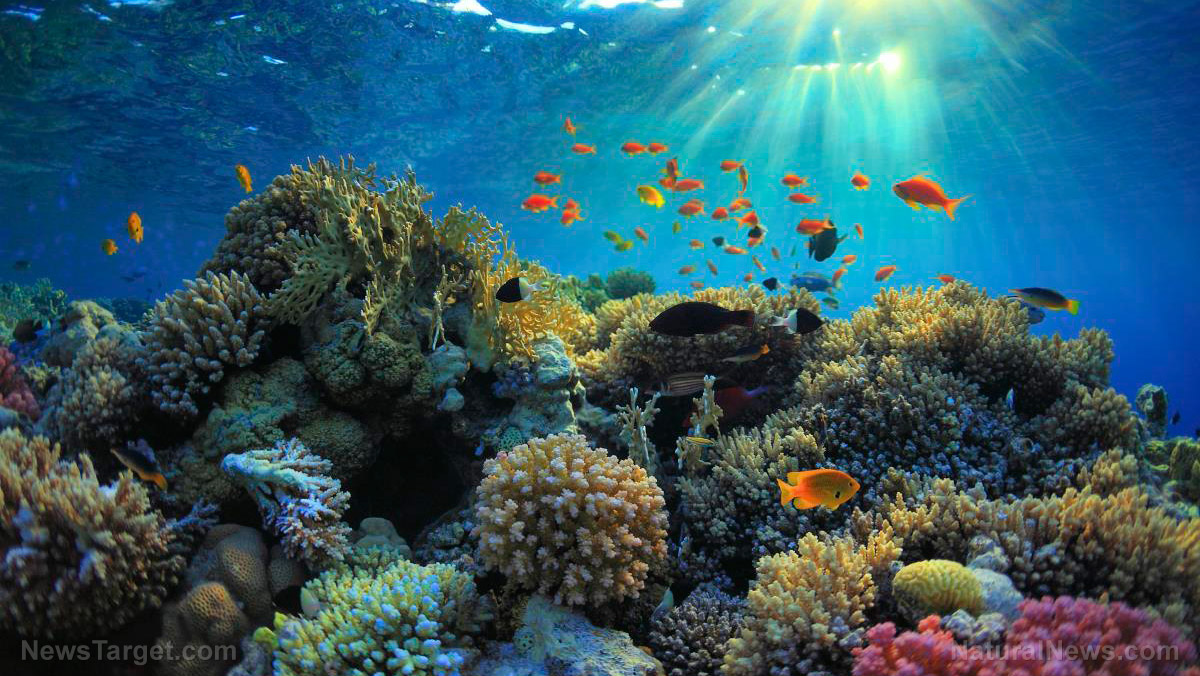 Parler
Parler Gab
Gab
- Coral reefs have repeatedly recovered from bleaching events, demonstrating adaptability despite warming trends.
- Studies show French Polynesian reefs rebounded to pre-disturbance levels within 5–10 years after mass bleaching.
- The Great Barrier Reef has seen record coral coverage for three consecutive years, contradicting doom-laden predictions.
- Historical data reveals corals survived far hotter periods, including the Paleocene-Eocene Thermal Maximum (5–8°C warmer than today).
- Alarmist narratives often ignore natural stressors (cyclones, starfish outbreaks) while exaggerating climate’s role in reef decline.
The science of coral adaptation
A 2019 study of French Polynesian reefs documented an "outstanding rate of recovery," with coral cover returning to pre-disturbance levels within a decade after mass bleaching. A 2024 Nature study further found that reefs near Moorea and Tahiti recovered up to 76% after repeated heatwaves, suggesting an evolving tolerance to warmer waters. These findings clash with claims like those of UC Santa Barbara’s Rebecca Vega Thurber, who asserted that heatwaves rendered reefs "barren plains." Such hyperbole neglects corals’ evolutionary history: they persisted through the Paleocene-Eocene Thermal Maximum, when global temperatures soared far beyond modern projections.The Great Barrier Reef’s record growth
Despite warnings of an "existential threat," Australia’s Great Barrier Reef (GBR) has achieved record coral coverage for three straight years. The Australian Institute of Marine Science’s 2024 report noted that all three regions of the GBR are rebounding from past bleaching, with some areas exceeding historical averages. The BBC’s recent coverage omitted this recovery, instead emphasizing a disputed claim that 2023 temperatures were the "highest in 400 years"—a claim based on uncertain proxy data. Coral biologist Helen McGregor tacitly acknowledged reefs’ adaptability, admitting they "survived a lot of change over geological time," even as she framed the issue as a crisis.Natural stressors vs. climate hype
Alarmist narratives frequently isolate climate change as the sole driver of reef decline, ignoring compounding factors like tropical cyclones and crown-of-thorns starfish outbreaks. For instance, the 2016–2017 bleaching event on the GBR coincided with a severe starfish infestation, yet media reports blamed warming alone. This selective focus distorts the scientific record. Coral mortality is a natural part of reef dynamics, with dead skeletons forming the foundation for new growth. Paleoclimatic evidence shows reefs have migrated poleward during past warm periods—a resilience mechanism rarely acknowledged in today’s politicized debates.The bigger picture: Policy vs. reality
The push to classify reefs as "endangered" (e.g., UNESCO’s proposed status for the GBR) often serves bureaucratic and funding agendas rather than conservation. By framing reefs as victims of an imminent climate tipping point, activists justify drastic policies—from carbon taxes to marine protected zones—that ignore local solutions like reducing agricultural runoff. Meanwhile, the reefs themselves continue to defy predictions. As Climate Realism has documented, coral cover in the Indo-Pacific has increased by 1–2% annually since 1978, even as CO₂ levels rose.Resilience over alarm
The evidence is clear: coral reefs are far hardier than the doomsayers claim. While bleaching events occur, recovery is the norm—not the exception. This resilience challenges the catastrophic framing of climate change and exposes the dangers of policy-driven science. As the debate rages, one truth remains: corals have outlasted ice ages, volcanic eruptions and asteroid impacts. Their survival hinges not on political posturing but on the very adaptability that alarmists too often dismiss. Nature’s endurance outstrips humanity’s fear. Sources for this article include: ClimateDepot.com Nature.com ClimateRealism.com WattsUpWithThat.comScientists challenge materialist dogma, explore PANPSYCHISM, or CONSCIOUSNESS as fundamental reality
By Lance D Johnson // Share
U.S. sanctions on Russia’s oil industry spark global reactions, market volatility
By Gregory Van Dyke // Share
The resurgence of ISIS: A shadow returns to a power-vacuumed Syria
By Zoey Sky // Share
ICJ condemns Israel as data reveals only 15% of promised aid is reaching Gaza
By Zoey Sky // Share
Governments continue to obscure COVID-19 vaccine data amid rising concerns over excess deaths
By patricklewis // Share
Tech giant Microsoft backs EXTINCTION with its support of carbon capture programs
By ramontomeydw // Share
Germany to resume arms exports to Israel despite repeated ceasefire violations
By isabelle // Share










